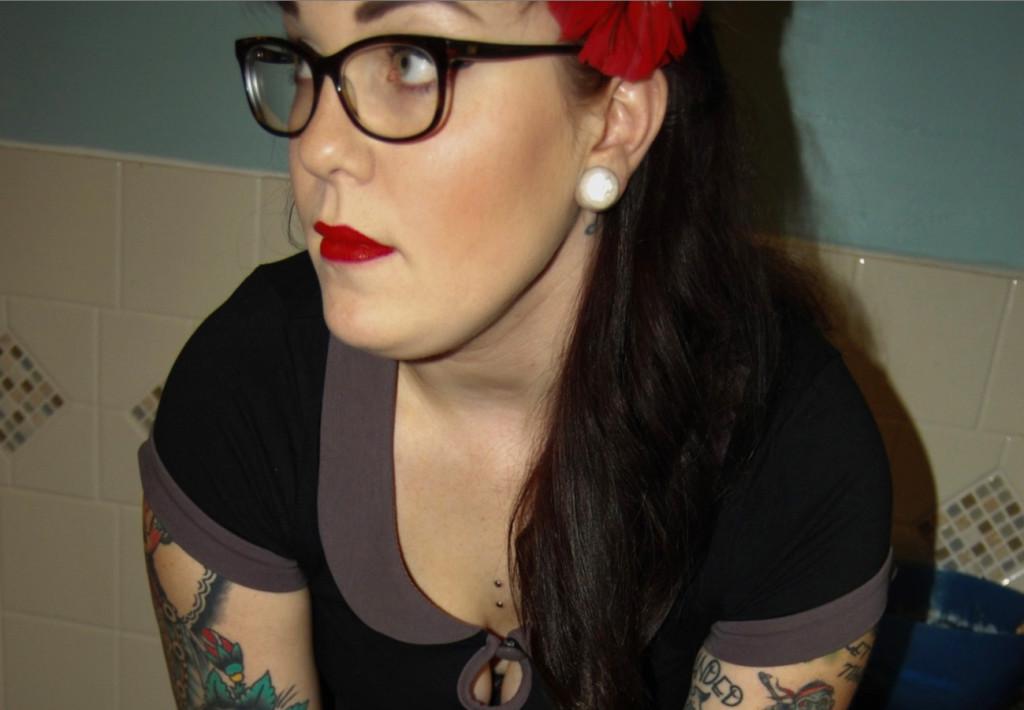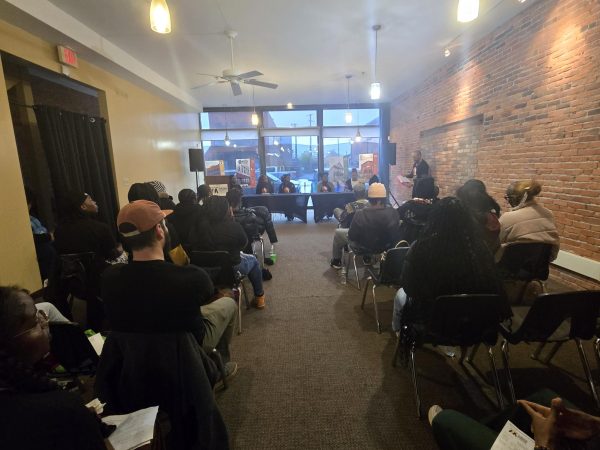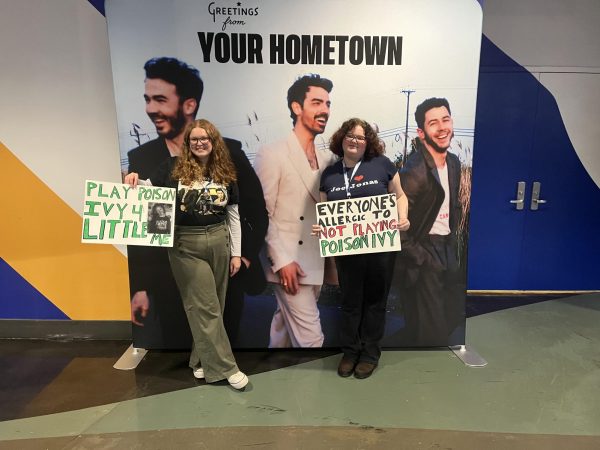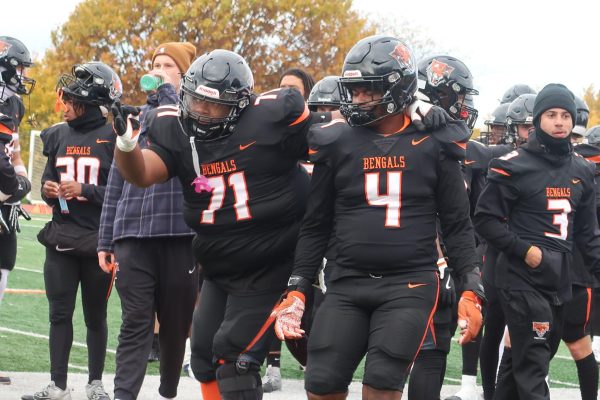Alumna challenges perceptions of tattooed women with Master’s thesis
Imagine this for a moment: you’re a woman standing in line at a coffee place, or in a shoulder-to-shoulder crowd at a concert at the harbor downtown. It’s warm outside, so you might be wearing a top that shows off some of your many tattoos.
The next thing you know, someone comes up to you and asks, “Oh, wow, where did you get this done?” This is while they run their hands all over your back. Or worse, they pull your shirt down to get a better look at the ink on your collarbone.
Stevie Berberick, a Buffalo State alumna, has experienced something close to each of those incidents. Her master’s thesis, “Shouting Through Skin,” which she presented at the University at Buffalo’s North Campus on Oct. 25, explores the experiences of women like her who have faced this kind of reaction to their tattoos.
The project started in her senior year of undergraduate work at Buffalo State.
“It showed me that I as go forward, I want to work and view media through a critical lens,” she said. “I want to see how groups of people are viewed through media, and how we can create our own independent media (to combat stereotypes and tropes).”
Berberick interviewed 10 women, who varied in age and location, living in New York State in 2012. She focused on white women, explaining that tattoos defy some common tropes associated with white femininity in particular.
“There’s this idea that (a white woman’s) body must be pure, clean, virginal,” she said. “Tattoos defy that virginity.”
As a result of that defiance, there is backlash, which varies in degree of severity. The first degree is staring, which she differentiated from a simple once-over or glance.
“A look is biological — you look at things that stand out to you, like a red sticker on a brown door,” she said. “A stare is longer, it’s intrusive. It seems relatively harmless, but it may not be.”
With that sometimes comes commentary, which starts out benign — “Where did you get it? What made you do it?” — but then turns a bit more interrogative, like “What if you want to get married someday?” “What will your children say?” and even more extreme, “Why would you desecrate your temple?” which plays back into the whiteness-as-pureness stereotype.
A more severe infraction is touching, like the situations described earlier, and every woman she interviewed said they had been touched in some capacity.
“Shouting Through Skin” is part self-ethnography for Berberick — as someone who has been hyper-visibly tattooed for 12 years, she was interested in seeing how other women with similar ink were viewed.
“There’s this argument that tattoos are more acceptable now, and are widespread,” she said. “My argument is that certain tattoos, in certain locations, on certain bodies, are more acceptable.”
For example, smaller, more easily covered up, and “feminine” designs — stars and butterflies, to name a couple — are more accepted than larger, more visible, and more “masculine” designs such as skulls or pinup girls.
Age was also a factor — both that of the subject and of the viewer — as well as the shape of the tattooed woman’s body and the geographic location.
Berberick found that as far as reactions to tattoos went, the older people were, the more adverse the reaction was. There is also a sort of geographical paradox when it comes to locations within New York State, which has a few larger cities, (New York and Buffalo being the two biggest) scattered amongst plenty of smaller towns and villages.
“In bigger cities, there are more inked bodies, which sort of alleviates the potential for negative reaction,” she said. “But there are also more people, which means you still have a greater chance of it.”
At the same time, she added, smaller cities like Buffalo have a greater potential for negative reaction, due to smaller population; however, seeing the same people multiple times, as is likely in this city, and getting to know the people behind the ink, will also lead to greater acceptance.
As for the bodies themselves, women with body types said to be more along the lines of the feminine ideal — slimmer, yet curvy, big bust, etc. — received more negative comments such as “Your body would be so pretty without (all the tattoos).”
Older women, Berberick explained, are seen as “already having served their feminine purpose,” while heavier women’s bodies are “already ruined” by excess weight. Therefore, tattoos are more accepted as a sign of “deviation” or further ruin.
The fact that commentary and even physical touching is believed to be warranted is a point of interest for Berberick.
“The rhetoric is always this — ‘You’re inviting me to consume your body,’” she said. “This idea that I’m doing this to draw your eye — that’s fascinating to me. We have to take the focus off of the body as a site of consumption and more as a site of empowerment.”
Berberick hopes to keep presenting at other colleges and universities and do another ethnography focused on ethnic minorities with tattoos. Her original thesis, now expanded to about 200 pages, may also be published if all works out.
“(I’d like to show everyone that) it’s not just about tattoos — it’s about how we view others based on their bodies and assess their worth,” she said. “It’s about the assumptions we make.”
Email: rodriguez.record@live.com
Twitter: @A_Rodriguez39











Stevie B. • Nov 20, 2013 at 4:51 pm
You did a wonderful job with the piece, Angelica! Cheers!